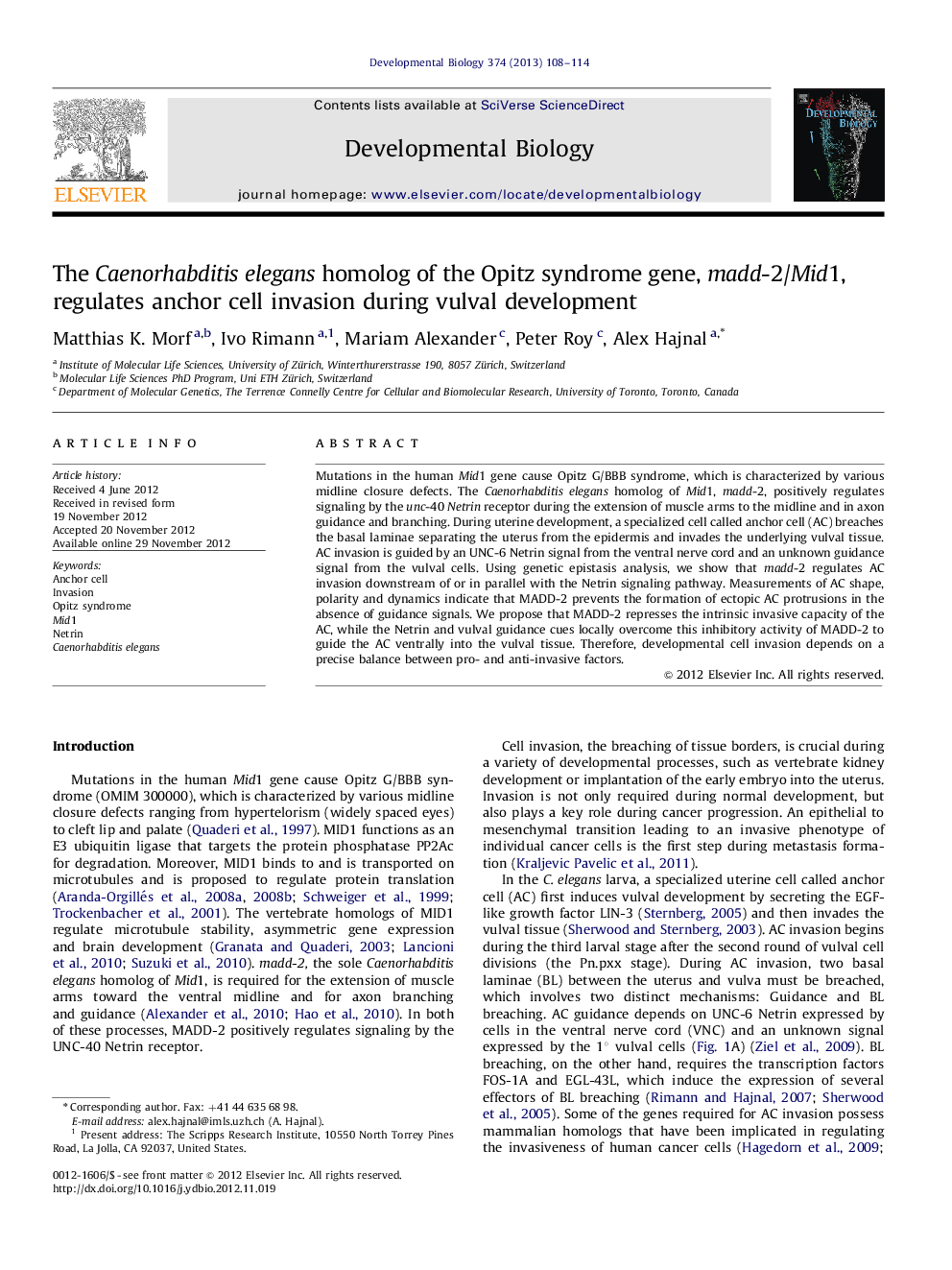| کد مقاله | کد نشریه | سال انتشار | مقاله انگلیسی | نسخه تمام متن |
|---|---|---|---|---|
| 2173114 | 1093696 | 2013 | 7 صفحه PDF | دانلود رایگان |

Mutations in the human Mid1 gene cause Opitz G/BBB syndrome, which is characterized by various midline closure defects. The Caenorhabditis elegans homolog of Mid1, madd-2, positively regulates signaling by the unc-40 Netrin receptor during the extension of muscle arms to the midline and in axon guidance and branching. During uterine development, a specialized cell called anchor cell (AC) breaches the basal laminae separating the uterus from the epidermis and invades the underlying vulval tissue. AC invasion is guided by an UNC-6 Netrin signal from the ventral nerve cord and an unknown guidance signal from the vulval cells. Using genetic epistasis analysis, we show that madd-2 regulates AC invasion downstream of or in parallel with the Netrin signaling pathway. Measurements of AC shape, polarity and dynamics indicate that MADD-2 prevents the formation of ectopic AC protrusions in the absence of guidance signals. We propose that MADD-2 represses the intrinsic invasive capacity of the AC, while the Netrin and vulval guidance cues locally overcome this inhibitory activity of MADD-2 to guide the AC ventrally into the vulval tissue. Therefore, developmental cell invasion depends on a precise balance between pro- and anti-invasive factors.
► madd-2 is required for efficient AC invasion.
► MADD-2 regulates AC invasion in parallel with the UNC-6 Netrin pathway.
► MADD-2 prevents the formation of guidance signal-independent AC protrusions.
► Proper control of AC invasion requires both positive and negative regulation.
Journal: Developmental Biology - Volume 374, Issue 1, 1 February 2013, Pages 108–114